Study on REE Distribution and Mineralogical Characteristics of Different Garnets by Electron Probe and Inductively Coupled Plasma-Mass Spectrometry
-
摘要: 石榴子石是变质岩和岩浆岩中一种常见的硅酸盐矿物,其类质同象非常普遍。已有资料表明,不同成分的石榴子石的颜色颇为不同,但石榴子石的成分和颜色之间相互关系尚未进行系统研究和总结。本文应用电子探针、电感耦合等离子体质谱、X射线粉晶衍射、拉曼光谱、红外光谱和紫外可见吸收光谱等手段对常见的红色(G1)、橙色(G2)、绿色(G3)和褐红色(G4)石榴石进行了系统测试,旨在揭示石榴子石成分、结构和颜色的内在关系和变异规律,以期为不同地质体中产出的石榴子石矿物学特征的总结及地质应用提供依据。研究结果表明,G1、G4样品含有较多Fe元素(Fe3+:0.24%、0.24%;Fe2+:1.01%、0.89%);G2样品含有较高的Mn元素(2.76%);G3样品含有很高的Cr、V元素(3453×10-6、1458×10-6)。类质同象对石榴石的晶体结构产生影响,晶胞参数有较大差别,分别是a=11.530nm(G1)、11.563nm(G2)、11.849nm(G3)和11.470nm(G4)。石榴石中的微量元素和稀土元素对于示踪物源及形成过程具有很强的指示意义。石榴石中的稀土元素总量分布不均匀,LREE/HREE比值小于1,表现为重稀土元素富集,Eu/Eu*比值小于1,为Eu负异常。所有样品的Ce异常均不明显。石榴石样品的拉曼光谱呈现出峰强和峰位的明显差异也反映了类质同象的存在:G1、G4在570nm处出现Fe3+电子跃迁吸收峰;G2在460nm和520nm附近出现Mn2+电子跃迁吸收峰;G3在690nm处出现Cr3+电子跃迁吸收峰。紫外可见吸收光谱特征显示,红色和褐红色样品出现在570nm处的Fe3+电子跃迁吸收峰,与其成分中含有大量Fe有关;橙色样品于460nm和520nm附近的特征吸收峰归属于Mn2+,对应其主要成分中大量的Mn;绿色样品690nm处出现强的吸收峰,由Cr3+跃迁产生,是微量元素Cr的存在所致。研究结果表明,石榴石的颜色与其成分和结构具有良好的对应关系。要点
(1) 类质同象替换影响石榴石晶体结构,X射线粉晶衍射分析表明不同颜色的石榴石晶胞参数具有明显差异。
(2) 不同颜色石榴石的拉曼光谱、紫外可见吸收光谱特征与其特征元素具有良好的对应关系。
(3) 石榴石的LREE/HREE比值小于1,表现出对重稀土元素的晶格优选性。
HIGHLIGHTS(1) Isomorphic substitution affected the crystal structure of garnet. X-ray powder diffraction analysis showed that the cell parameters of garnet with different colors had obvious differences.
(2) The Raman spectra and UV-Vis absorption spectra of garnets with different colors had good correspondence with their characteristic elements.
(3) The LREE/HREE of garnet was less than 1, indicating that garnet had lattice preference for HREE.
Abstract:BACKGROUNDGarnet is a common silicate mineral in metamorphic and magmatic rocks, and its isomorphism is very common. The existing data show that the color of garnet with different composition is quite different, but the relationship between the composition and color of garnet has not been systematically studied.OBJECTIVESTo reveal the internal relationship and variation law of garnet composition, structure and color, and provide a basis for the summary and geological application of the mineralogical characteristics of garnet in different geological environments.METHODSCommon red (G1), orange (G2), green (G3) and maroon (G4) garnet have been tested systematically by electron microprobe, inductively coupled plasma-mass spectrometry, X-ray powder crystal diffraction, Raman spectroscopy, infrared spectroscopy and ultraviolet-visible absorption spectroscopy.RESULTSThe results showed that the samples of G1 and G4 contained more Fe (Fe3+:0.24%, 0.24%, Fe2+:1.01%, 0.89%). The samples of G2 contained higher Mn (2.76%), whereas the samples of G3 have higher Cr and V contents of 3453×10-6 and 1458×10-6, respectively. Isomorphic substitution greatly affected the crystal structure of garnet. The cell parameters were a=11.530nm(G1), 11.563nm(G2), 11.849nm(G3) and 11.470nm(G4). Trace and rare earth elements in garnet can be used to indicate the source and formation process. The rare earth element analysis showed that the total rare earth elements of garnet were distributed unevenly, and the ratio of LREE/HREE was less than 1, with enriched heavy rare earth elements. The Eu/Eu* ratio was less than 1, which was a negative Eu anomaly. Ce abnormalities of all samples were not obvious. G1 and G4 have Fe3+ electronic transition absorption peak at 570nm. G2 has Mn2+ electronic transition absorption peak near 460nm and 520nm, whereas G3 has Cr3+ electronic transition absorption peaks at 690nm. The Raman spectra of garnet samples showed obvious differences in peak intensity and position, which also reflected the ubiquitous existence of isomorphism in these garnets. The ultraviolet-visible absorption spectra of these garnets showed high consistency with its color and characteristic elements. The absorption peaks of Fe3+ in red and maroon samples at 570nm were related to the high content of Fe, while the characteristic absorption peaks of orange sample near 460 and 520nm belong to Mn2+, corresponding to the large amount of Mn (2.76%). A strong absorption peak was observed at 690nm in the green sample, which was caused by the transition of Cr3+ and the presence of trace element Cr (3453×10-6). The results showed that the color of garnet had a good correspondence with its composition and structure.CONCLUSIONSThe color characteristics of garnet can be used as a typomorphic feature of minerals to indicate the existence of different characteristic elements. These methods can be used to study the isomorphism and color origin of garnet effectively. -
致密砂岩气作为三大非常规油气资源之一,是常规油气资源的主要接替者,该类储层中20~500nm是油气聚集的主要场所,而黏土矿物涵盖了所有小于2μm的铝硅酸岩矿物,常见的有绿泥石、伊利石、蒙脱石及混层黏土等,是致密砂岩储层主要的组成矿物之一,该类矿物表面发育大量的纳米孔隙,对其形貌特征进行精细刻画,不仅可建立不同成岩阶段与黏土矿物形貌特征的对应关系,还可追踪晶体生长过程中温度、杂质及原子行为对晶体微形貌特征产生的影响[1-3],为成岩环境、储层评价的研究提供依据,具有重要的研究意义。
目前用于表征矿物表面纳米形貌特征研究的核心方法主要有电子显微术、超分辨光学显微术与扫描探针显微术[4-6]。电子显微术作为一种主要的微区形貌观测手段,可对微米/纳米尺度的结构进行定性表征,运用该方法可观察到高岭石、伊利石等黏土矿物的形态特征[7],在成岩历史恢复[8]、热液蚀变研究、结晶习性[9-10]、油气生成[11]、运移及聚集等的研究中起着关键性作用然而该方法主要是在二维平面对矿物形貌进行定性表征,无法对显微结构进行定量分析。此外,该方法受样品导电性的制约,无法直接观察黏土矿物的形貌特征,更无法真实地呈现黏土矿物表面纳米/亚纳米尺度的结构特征。超分辨光学显微术主要通过可见光振幅的变化或偏振光的干涉对矿物表面的微形貌进行观察,前人利用该方法观察到绿柱石、金刚石、磁铁矿、黄铁矿、闪锌矿、沸石等矿物表面的螺旋位错结构,揭示了矿物形貌与生长机理间的相关关系,推动了矿物生长理论的发展。但是该方法观察对象局限在解理面这类平坦表面,无法对粗糙、凹凸不平的表面进行观察[6-14]。所以电子显微术与超分辨光学显微术在黏土矿物形貌精细表征与定量分析研究中存在一定的缺陷。原子力显微镜(AFM)作为第三代扫描探针显微镜,在纵、横向具有超高分辨率,不仅可同时观察矿物在二维平面与三维空间的形貌特征,还可对矿物形貌特征进行定量分析,是一种强有力的表面形貌观察手段。近年Gratz等[13]利用AFM对石英表面的蚀像进行了精细表征,观察到纳米级的突缘与位错沟,证实了硅酸盐溶解和生长的突缘运动模型。Hochella等[15]利用AFM观察到赤铁矿表面的波状起伏现象,揭示了矿物表面的断口效应。Friedbacher等[16]和Jr Eggleston等[17]和Johnson等[18]分别利用AFM观察到Stultorum贝壳和钠长石表面形貌特征,揭示了晶体生长机制。上述研究成果促进了矿物表面纳米/亚纳米尺度形貌特征的研究,使矿物表面生长形貌特征的研究日趋精细化。而且,AFM方法克服了黏土矿物在层间交换性阳离子及离子力的作用下形成团聚体及单晶难以剥离的影响,可直接观察黏土矿物表面微形貌特征,从而揭示晶体表面纳米/亚纳米形貌及孔隙结构特征,因此,该方法近年被逐渐应用于非常规油气储层评价工作中[19]。
川西须家河致密砂岩储层蕴藏了丰富的天然气资源,黏土矿物是该储层主要的组成矿物之一,随着勘探开发的深入,亟需对黏土矿物形貌进行精细表征。因此,本文以川西须家河组晚成岩阶段致密砂岩为研究对象,利用AFM分析技术研究黏土矿物中伊蒙混层、绿泥石与伊利石的形貌特征,揭示晶体表面微形貌的指示意义、黏土矿物形貌特征与成岩作用间的空间耦合关系,以及纳米孔隙的结构特征,从而为致密砂岩储层的评价提供科学依据。
1. 实验部分
1.1 实验样品
实验样品为川西须家河致密砂岩,石英和长石含量较高,填隙物含量低,主要为胶结物,杂基含量少[20],通过X射线衍射(XRD)分析,样品中黏土矿物主要为伊蒙混层黏土(占黏土总量的相对含量为76.2%)、绿泥石(占黏土总量的相对含量为21.2%)及少量伊利石(占黏土总量的相对含量为2.6%)。
1.2 样品制备
将致密砂岩粉碎至200目,按照《沉积岩中黏土矿物和常见非黏土矿物X射线衍射分析方法》(SY/T 5163—2018)进行黏土提取,将提取的黏土矿物配制成浓度为5%的溶液,滴于干净的载玻片,待自然风干后用于测试。
1.3 实验方法
实验采用Park NX10原子力显微镜,横向分辨率0.05nm,纵向分辨率0.015nm,扫描频率0.15~0.4Hz,阈值(Setpoint)为20nm,XY扫描范围100μm×100μm,Z扫描范围15μm。在原子力显微镜扫描过程中,由于黏土矿物局部仍然存在团聚现象,形成表面的异常凸起,因此参数的选择兼顾不同扫描区域下仪器的分辨率与黏土矿物团聚体的大小,避免扫描过程中污染纳米探针,从而影响图像质量。
2. 结果与讨论
2.1 伊蒙混层黏土矿物的形貌特征
伊蒙混层黏土是川西须家河组主要的黏土矿物之一,是伊利石与蒙脱石两个端员矿物之间的过渡矿物,亦是成岩阶段划分的重要标志[21]。本文利用原子力显微镜观察伊蒙混层黏土矿物晶体表面形貌特征(图1中a,b,c),根据晶体结晶位向差可知[22],在1μm×1μm扫描区域存在两个晶界,将扫描区域分为三个晶粒(图1a),分别为图1a中的A、B、C,粒径在100~300nm之间,晶粒均由水平生长层在三维空间堆垛而层,晶棱间距整体上呈上疏下密的规律。而且从图1a-A中可明显观察到伊利石生长层在空间堆垛形成独特的“宝塔”形,伊利石与蒙脱石的晶棱局部呈溶蚀港湾状,而不是理想的面平棱直的晶体生长终态。此外,通过定量分析,晶粒上部阶梯间距集中分布在±0.6nm、晶粒下部阶梯间距集中分布在0.3~0.8nm(表1)。
伊蒙混层作为一常规与非常规油气储层中常见的混层黏土矿物,观察其形貌特征对于储层物理特性研究具有重要意义。前人利用电子显微术、超分辨光学显微术观察到伊蒙混层黏土矿物主要呈棉絮状包膜、薄膜状、栉壳状等形态特征,进而阐述了其晶面条纹的成因、晶体生长机制[4,7,23]。本次研究利用原子力显微镜观察到晶体亚纳米生长层在二维平面的展布特征与三维空间的堆垛规律[21]。根据伊蒙混层黏土形貌特征,结合晶体周期性键链(PBC)理论,在图1a-C中的晶面为伊蒙混层黏土矿物晶体生长层在三维空间堆垛形成的阶梯面(S面),该晶面与平坦面(F面)相邻,属于亚稳定状态的晶面,表明川西须家河组晚成岩阶段的伊蒙混层黏土矿物中伊利石与蒙脱石虽然是两种独立物相在二维平面紧密共生,但处于一个不稳定状态,再结合伊利石、蒙脱石晶体内部空间格子构造及晚成岩阶段伊利石、蒙脱石外部稳定赋存环境,可知该成岩阶段中伊蒙混层黏土中的两种黏土矿物处于一个动态转化过程,该晶面在伊蒙混层黏土中较发育,形成了大量的纳米孔隙,是致密砂岩中主要的纳米级储集空间。在伊利石生长过程中,由于晶面生长向外平行推移,在图1a中A、B形成了砂钟状构造,结合科赛尔-斯特兰斯基层生长理论,说明伊利石生长过程中物质浓度过饱和[22-24]。但是,不论是伊利石晶体还是蒙脱石晶体,其晶棱局部均呈溶蚀港湾状,而不是理想的面平棱直的晶体生长终态,表明晶体在生长过程中物质浓度发生了轻微的变化,导致晶棱出现不同程度的溶蚀,使得局部呈溶蚀港湾状。此外,伊蒙混层黏土矿物阶梯间距与单原子分子层厚度相当,表明伊蒙混层黏土矿物的基本结构单元为单原子层所组成,其生长机理是结晶微粒以晶核为中心二维附着生长并延展[22]。
2.2 绿泥石矿物的形貌特征
绿泥石作为川西须家河组致密砂岩中一种主要的黏土矿物,通过原子力显微镜观察到绿泥石生长层主要有两种形态特征:一种是呈面平棱直的近正六边形理想晶体生长终态,且生长层在纵向上呈有规律的无隙叠置(图2中a,b,c);另一种呈不规则纺锤状,与近正六边形晶体生长层在纵向交互出现(图2a)。通过原子力显微镜的精细刻画,揭示了处于生长状态的绿泥石生长层由小到大向外平行推移生长,晶棱平直且互相平行。此外,通过定量分析,绿泥石晶体生长层单层厚度在5nm左右。
绿泥石为2∶1型的层状硅酸盐,它与伊蒙不同的是,其间是八面体氢氧化物片层[20,25]。本次研究观察到的近正六边形绿泥石晶体生长层相较于扫描电镜下观察到的叶片状和玫瑰花状,该生长层在纵向上无隙叠置,结合黏土矿物层间电荷的相关特性,表明绿泥石层间域含一定的层间阳离子,具有较强的吸附性,导致其纵向上层间缝隙不发育[22-24]。根据绿泥石生长层形态特征,结合科赛尔-斯特兰斯基层生长理论,表明川西须家河晚成岩阶段绿泥石晶体生长处于过饱和且浓度稳定的生长环境。此外,通过定量分析绿泥石生长层厚度为单原子分子层厚度的5倍,结合晶体生长理论,表明川西须家河组晚成岩阶段绿泥石晶体处于过饱和的生长环境,但是由于生长过程中杂质原子被阶梯吸附,导致部分绿泥石生长层停止生长或生长速度减缓,形成生长层的重叠,从而使得绿泥石晶体的生长层变厚。
2.3 伊利石矿物的形貌特征
伊利石是一种富钾元素的二八面体黏土矿物,其晶体结构由2个四面体片夹一个八面体片构成,利用原子力显微镜在不同尺度分别对伊利石集合体与晶体生长层形貌特征进行观察。在10μm×10μm大视域形貌图中,伊利石集合体形态不规则,边界局部被溶蚀呈港湾状,由于溶蚀作用在伊利石集合体边界处发育阶梯面(S),集合体晶面局部可见伊利石鳞片状雏晶堆积(图3中a,b,c)。在1μm×1μm精细扫描图中,伊利石晶体生长层主要呈无定形态、表面平坦、平直晶棱与溶蚀港湾状晶棱间隔出现(图4中a,b,c)。此外,通过定量分析,伊利石生长层厚度在4~7nm。
伊利石作为川西须家河组致密砂岩晚成岩阶段一种主要的自生矿物,本次研究所观察到的伊利石晶体生长层的形态特征与扫描电镜下所观察到的刀片状、卷刃刀片状、薄膜状、丝缕状及蜂窝状有较大的差异[26-33]。根据伊利石集合体表面的形貌特征,结合晶体层生长理论与晶体周期性键链(PBC)理论,表明该阶段伊利石处于亚稳定状态,但是该晶面发育的大量平行阶梯条纹或波纹状阶梯可为非常规储层提供大量的纳米孔隙。通过精细扫描揭示伊利石晶体生长层并不是“面平棱直”的生长终态,结合晶体层生长理论,表明伊利石晶体生长层处于不稳定的生长状态[22-24]。此外,通过定量分析伊利石生长层厚度为单原子分子层厚度的5倍,结合晶体生长理论,表明川西须家河组晚成岩阶段伊利石晶体生长层生长过程中杂质原子被阶梯吸附,致使部分伊利石生长层停止生长或生长速度减缓,形成生长层的重叠,从而使得伊利石晶体生长层变厚。
3. 结论
利用原子力显微镜揭示了川西须家河组致密砂岩储层中黏土矿物的纳米/亚纳米形貌特征,利用原子力显微镜超高空间分辨率优势观察到伊蒙混层黏土矿物主要发育平行阶梯条纹,其表面发育的阶梯面(S面);伊利石作为主要的黏土矿物之一,晶面平坦光滑,纵向上发育生长层平行阶梯条纹及波纹状阶梯,是纳米孔隙发育的主要载体矿物;绿泥石形态规则,在纵向上无隙叠置。通过定量分析,伊利石与伊蒙混层生长层是单原子层构成,绿泥石生长层为多原子分子层所构成,揭示了同一成岩阶段不同黏土矿物生长层厚的差异,从而为非常规油气储层与黏土矿物形貌特征与成岩作用之间的耦合关系的研究提供微观依据。
利用原子力显微镜观察黏土矿物表面微形貌特征,解决了电子显微术前处理过程中金属离子对纳米形貌特征的“二次改造”,真实地呈现了黏土矿物生长层二维/三维空间形貌特征;同时亦克服了黏土矿物层间阳离子静电吸附的影响,精细表征了生长层纵横向的展布特点。为了更加系统地研究矿物亚纳米-纳米结构特征,该方法需与其他微区分析方法相结合,从而更加有力地支撑亚纳米-纳米矿物学的发展。
-
表 1 石榴子石样品中的主量元素电子探针分析结果
Table 1 EMPA results of major elements in garnet samples
样品编号 含量(%) SiO2 TiO2 Al2O3 Cr2O3 FeO MnO MgO CaO 8种氧化物之和 Si Ti Al Cr Fe3+ Fe2+ Mn Mg Ca Uvt And Py Sps Grs Alm G1 37.65 0 21.34 0 19.87 4.12 16.13 1.33 100.44 2.82 0 1.88 0 0.24 1.01 0.26 1.8 0.11 0 11.1 56.66 8.22 0 31.76 G2 35.67 0.06 19.99 0 0.84 39.39 2.23 0.75 98.93 2.95 0 1.95 0 0.06 0 2.76 0.28 0.07 0 2.81 8.87 88.99 0 0 G3 36.60 0.40 20.74 0.17 0.06 5.98 0.55 34.81 99.31 2.85 0.02 1.91 0.01 0 0 0.40 0.06 2.91 0.47 0.17 1.9 11.37 85.73 0 G4 37.61 0.06 21.34 0 18.03 4.52 15.87 3.04 100.47 2.81 0 1.88 0 0.24 0.89 0.29 1.77 0.24 0 11.41 55.56 8.99 0 27.8 注:以12个氧原子和8个阳离子为计算基础。Uvt—钙铬榴石; And—红柱石; Py—黄铁矿; Sps—锰铝榴石; Grs—钙铝榴石。 表 2 石榴石样品中的微量元素和稀土元素组成
Table 2 Trace elements and rare earth elements composition of garnet samples
微量元素 含量(×10-6) G1 G2 G3 G4 Cr 233 60.9 3453 126 V 132 1.42 1358 30.3 Zn 3447 1851 2188 3116 Ni 1.21 2.09 < 0.05 3.3 Rb 0.18 0.38 0.25 0.21 Sr 3.60 1.93 3.83 1.59 Ba 4.31 6.39 3.55 1.66 Pb 2.92 0.85 1.68 0.84 Nb 12.6 19.8 13.8 1.43 Ta 0.31 0.35 0.15 0.32 Zr 18.7 10.3 43.9 88.9 Hf 1.21 1.01 2.1 2.55 Be < 0.05 0.59 1.03 0.07 Sc 282 5.67 11.8 118 Cu 2.49 4.25 2.22 2.18 Ga 7.93 51.7 77.8 5.51 Mo 0.42 0.13 0.52 0.29 Cd 0.90 0.56 0.18 0.24 Cs 0.05 0.16 0.2 0.06 W 1.02 0.45 0.39 0.85 La 0.39 0.42 0.2 6.58 Ce 0.26 0.85 0.2 7.07 Pr 41.5 1.23 4.9 101 Nd 1.03 0.63 0.9 8.93 Sm 12.7 7.59 5.9 32.6 Eu 4.76 21.9 12 47.8 Gd 52.9 52.5 18 108 Tb 123 130 26 187 Dy 181 171 30 232 Ho 191 169 28 235 Er 205 181 32 269 Tm 196 175 33 271 Yb 189 169 36 269 Lu 174 161 36 243 Y 202 190 33 276 REE 1574 1433 296 2293 LREE/ HREE 0.04 0.02 0.1 0.1 Eu/Eu* 0.15 0.73 1 0.68 Ce/Ce* 0.01 1.04 0.1 0.13 注:Eu/Eu*=2EuN/(SmN+GdN),无单位;Ce/Ce*=2CeN/(LaN+PrN),无单位;LREE/HREE无单位。 -
冯晓燕, 沈美冬, 张勇, 等.软玉中的一种绿色斑点——钙铝榴石[J].岩矿测试, 2013, 32(4):608-612. doi: 10.15898/j.cnki.11-2131/td.201907310115 Feng X Y, Shen M D, Zhang Y, et al.The green spots in nephrite-Grossularite[J].Rock and Mineral Analysis, 2013, 32(4):608-612. doi: 10.15898/j.cnki.11-2131/td.201907310115
梁祥济.钙铝榴石-钙铁系列石榴子石的特征及其交代机理[J].岩石矿物学杂志, 1994, 13(4):342-352. Liang X J.Garnets of grossular-andradite series:Their characteristics and metasomatic mechanism[J].Acta Petrologica et Mineralogica, 1994, 13(4):342-352.
Stockton C M, Manson D V.A proposed new classification for gem-quality garnets[J].Gems and Gemology, 1985, 21(4):205-218. http://www.researchgate.net/publication/271301180_A_Proposed_New_Classification_for_Gem-Quality_Garnets
应立娟, 唐菊兴, 王登红, 等.西藏甲玛超大型铜矿石榴子石特征及成因意义[J].地质学报, 2012, 86(11):1735-1747. http://d.wanfangdata.com.cn/Periodical/dizhixb201211003 Ying L J, Tang J X, Wang D H, et al.Features of garnet in the Jiama super-large Cu polymetallic deposit and its genetic significance[J].Acta Geologica Sinica, 2012, 86(11):1735-1747. http://d.wanfangdata.com.cn/Periodical/dizhixb201211003
郑伟, 陈懋弘, 赵海杰, 等.广东省天堂铜铅锌多金属矿床夕卡岩矿物学特征及其地质意义[J].岩石矿物学杂志, 2013, 32(1):23-40. http://www.cqvip.com/QK/94932X/20131/44587211.html Zheng W, Chen M H, Zhao H J, et al.Skarn mineral characteristics of the Tiantang Cu-Pb-Zn polymetallic deposit in Guangdong Province and their geological significance[J].Acta Petrologica et Mineralogica, 2013, 32(1):23-40. http://www.cqvip.com/QK/94932X/20131/44587211.html
姚远, 陈俊, 陆建军, 等.华南三类含钨锡夕卡岩中石榴子石的成分、微量元素及红外光谱[J].矿物学报, 2013, 33(3):315-328. Yao Y, Chen J, Lu J J, et al.Composition, trace element and infrared spectrum of garnet from three types of W-Sn bearing skarns in the South of China[J].Acta Mieralogica Sinica, 2013, 33(3):315-328.
刘春蕊, 陈美华, 潘少逵.一种钙铁质锰铝榴石的宝石矿物学特征[J].宝石和宝石学杂志, 2018, 20(4):10-15. http://www.cnki.com.cn/Article/CJFDTotal-BSHB201804002.htm Liu C R, Chen M H, Pan S K.Gemmological and mineralogical characteristics of calcareous and iron spessartine[J].Journal of Gems & Gemmology, 2018, 20(4):10-15. http://www.cnki.com.cn/Article/CJFDTotal-BSHB201804002.htm
陈涛, 刘云贵, 尹作为, 等.黑龙江穆棱地区宝石级石榴石的宝石学及谱学特征[J].光谱学与光谱分析, 2013, 33(11):2964-2967. http://www.cqvip.com/QK/90993X/201311/47535752.html Chen T, Liu Y G, Yin Z W, et al.Gemology and spectra characterization of gem garnet from Muling City, Heilongjiang Province[J].Spectroscopy and Spectral Analysis, 2013, 33(11):2964-2967. http://www.cqvip.com/QK/90993X/201311/47535752.html
罗跃平, 郑秋菊, 王春生.石榴石的品种及鉴定[J].宝石和宝石学杂志, 2015, 17(3):36-42. http://www.cnki.com.cn/Article/CJFDTotal-BSHB201503006.htm Luo Y P, Zheng Q J, Wang C S.Variety and identification of garnet[J].Journal of Gems & Gemmology, 2015, 17(3):36-42. http://www.cnki.com.cn/Article/CJFDTotal-BSHB201503006.htm
陈丁滢.运用X射线荧光光谱法对石榴石分类鉴定[J].上海计量测试, 2007, 34(6):11-13. http://d.wanfangdata.com.cn/Periodical/shjlcs200706002 Chen D Y.Make use of X-ray fluorescence spectrum to classify and identify the garnet[J].Shanghai Measurement and Testing, 2007, 34(6):11-13. http://d.wanfangdata.com.cn/Periodical/shjlcs200706002
聂飞, 董国臣, 王霞, 等.太行山北段浮图峪矿田石榴子石环带特征研究[J].岩矿测试, 2014, 33(3):439-449. doi: 10.15898/j.cnki.11-2131/td.201907310115 Nie F, Dong G C, Wang X, et al.The zoning characteristics of garnets in the Futuyu orefield of the northern Taihang Mountain[J].Rock and Mineral Analysis, 2014, 33(3):439-449. doi: 10.15898/j.cnki.11-2131/td.201907310115
刘琰, 邓军, 王丽华.大型光谱仪器在翡翠检测中的应用[J].光谱学与光谱分析, 2006, 26(3):577-582. http://www.cqvip.com/Main/Detail.aspx?id=21497735 Liu Y, Deng J, Wang L H.Application of large-scale spectrometers in the detection of jadeite[J].Spectroscopy and Spectral Analysis, 2006, 26(3):577-582. http://www.cqvip.com/Main/Detail.aspx?id=21497735
刘琰, 邓军, 邢延炎, 等.白钨矿的振动光谱与颜色成因初探[J].光谱学与光谱分析, 2008, 28(1):121-124. http://www.cnki.com.cn/Article/CJFDTEMP-GUAN200801028.htm Liu Y, Deng J, Xing Y Y, et al.Vibrational spectra of scheelite and its solor genesis[J].Spectroscopy and Spectral Analysis, 2008, 28(1):121-124. http://www.cnki.com.cn/Article/CJFDTEMP-GUAN200801028.htm
刘琰, 沈战武, 邓军, 等.锡石振动光谱特征与矿物成因类型[J].光谱学与光谱分析, 2008, 28(7):1506-1509. http://d.wanfangdata.com.cn/Periodical/gpxygpfx200807015 Liu Y, Shen Z W, Deng J, et al.Vibration spectra and genetic type of gassiterites[J].Spectroscopy and Spectral Analysis, 2008, 28(7):1506-1509. http://d.wanfangdata.com.cn/Periodical/gpxygpfx200807015
杨晓丹, 施光海, 刘琰.新疆和田黑色透闪石质软玉振动光谱特征及颜色成因[J].光谱与光谱学分析, 2012, 54(14):681-685. http://d.wanfangdata.com.cn/Periodical/gpxygpfx201203025 Yang X D, Shi G H, Liu Y.Vibrational spectra of black species of Hetian nephrite (Tremolite jade) and its color genesis[J].Spectroscopy and Spectral Analysis, 2012, 54(14):681-685. http://d.wanfangdata.com.cn/Periodical/gpxygpfx201203025
范建良, 刘学良, 郭守国.石榴石族宝石的拉曼光谱研究及鉴别[J].应用激光, 2007, 27(4):310-313. http://www.cnki.com.cn/Article/CJFDTotal-YYJG200704010.htm Fan J L, Liu X L, Guo S G.Study on Raman spectra of garnets and relative identification[J].Applied Laser, 2007, 27(4):310-313. http://www.cnki.com.cn/Article/CJFDTotal-YYJG200704010.htm
Bersani D, Andò S, Vignola P, et al.Micro-Raman determination of the composition of ugrandite garnets[C]//AIP Conference Proceedings, 2009, doi: 10.1063/1.3222891.
吴菲, 张晓超, 朱仲良.石榴石金属离子含量与拉曼位移的定量关系研究[J].光散射学报, 2015, 27(4):350-354. http://www.cnki.com.cn/Article/CJFDTotal-GSSX201504009.htm Wu F, Zhang X C, Zhu Z L.Quantitative relation between Raman shift and metal ion content in garnet[J].The Journal of Light Scattering, 2015, 27(4):350-354. http://www.cnki.com.cn/Article/CJFDTotal-GSSX201504009.htm
王锦荣, 王一铭, 张大骞, 等.红外吸收光谱特征对石榴石种属及颜色成因的指示——以一颗黄色石榴石为例[J].宝石和宝石学杂志, 2020, 22(1):20-25. http://www.cqvip.com/QK/90026A/202001/7101586650.html Wang J R, Wang Y M, Zhang D Q, et al.FTIR investigation of Garnet:Indification for specific species and coloration:A case study of a yellow garnet[J].Journal of Gems & Gemmology, 2020, 22(1):20-25. http://www.cqvip.com/QK/90026A/202001/7101586650.html
刘翠红, 陈超洋, 邵天, 等.变色石榴石的紫外-可见吸收光谱与3D荧光光谱研究[J].光谱学与光谱分析, 2020, 40(7):2148-2152. Liu C H, Chen C Y, Shao T, et al.UV-Vis absorption spectra and 3D fluorescence spectra study of color-change garnet with red fluorescence[J].Spectroscopy and Spectral Analysis, 2020, 40(7):2148-2152.
刘春花, 杨林, 尹京武, 等.新疆库鲁克塔格兴地塔格群中石榴石的矿物学特征研究[J].岩石矿物学杂志, 2011, 30(2):234-242. http://d.wanfangdata.com.cn/Periodical/yskwxzz201102008 Liu C H, Yang L, Yin J W, et al.Mineralogical characteristics of garnets from Xingditage Group of Kuruk Tag, Xinjiang Acta[J].Petrologica et Mineralogica, 2011, 30(2):234-242. http://d.wanfangdata.com.cn/Periodical/yskwxzz201102008
陈武, 钱汉东.石榴石族宝石矿物的产状和成因[J].宝石和宝石学杂志, 2000, 2(4):33-37. http://www.cqvip.com/Main/Detail.aspx?id=4970855 Chen W, Qian H D.Genesis and occurrence of group of garnet gem mineral[J].Journal of Gems & Gemmology, 2000, 2(4):33-37. http://www.cqvip.com/Main/Detail.aspx?id=4970855
Irving A.A review of experimental studies of crystal/liquid trace element partitionin[J].Geochimica et Cosmochimica Acta, 1978, 42(6):743-770. http://www.sciencedirect.com/science/article/pii/0016703778900911
Pride C, Muecke G K.Rare earth element distributions among coexisting granulite facies minerals, Scourian Complex, NW Scotland[J].Contributions to Mineralogy and Petrology, 1981, 76:463-471. doi: 10.1007/BF00371488
Gaspar M, Knaack C, Meinert L D, et al.REE in skarn systems:A LA-ICP-MS study of garnets from the Crown Jewel gold deposit[J].Geochimica et Cosmochimica Acta, 2008, 72:185-205. http://www.sciencedirect.com/science/article/pii/S0016703707005546
刘晓菲, 袁顺达, 双燕, 等.湖南金船塘锡铋矿床石榴子石原位LA-ICP-MS稀土元素分析及其意义[J].岩石学报, 2014, 30(1):163-177. http://www.cqvip.com/QK/94579X/201401/48736550.html Liu X F, Yuan S D, Shuang Y, et al.In situ LA-ICP-MS REE analyses of the skarn garnets from the Jinchuantang tin-bismuth deposit in Hunan Province, and their significance[J].Acta Petrologica Sinica, 2014, 30(1):163-177. http://www.cqvip.com/QK/94579X/201401/48736550.html
Boyd F R, Pearson D G, Hoal K O, et al.Garnet lherzolites from Louwrensia, Namibia:Bulk composition and P/T relations[J].Lithos, 2004, 77(1-4):573-592. http://onlinelibrary.wiley.com/resolve/reference/ADS?id=2004Litho..77..573B
Alessandra S, Simona Q, Federico B, et al.Fe2+-O and Mn2+-O bonding and Fe2+-and Mn2+-vibrational properties in synthetic almandine-spessartine solid solutions[J].European Journal of Mineralogy, 2004, 16(5):801-808.
Hofmeister A M, Fagan T J, Campbell K M, et al.Single-crystal IR spectroscopy of pyrope-almandine garnets with minor amounts of Mn and Ca[J].American Mineralogist, 1996, 81(3-4):418-428. http://adsabs.harvard.edu/abs/1996AmMin..81..418H
Moore R K, White W B, Long T V.Vibrational spectra of the common silicates:Ⅰ.The garnets[J].American Mineralogist, 1971, 56:54-71. http://www.researchgate.net/publication/284046328_Vibrational_spectra_of_the_common_silicates_I_The
王奎仁, 彭捷, 杨学明, 等.我国某些矽卡岩型矿床中石榴石的波谱学研究[J].安徽地质, 1992(4):1-12. http://www.cnki.com.cn/Article/CJFDTotal-AHDZ199204000.htm Wang K R, Peng J, Yang X M, et al.Spectroscopic study of garnet in some skarn deposits in China[J].Geology of Anhui Province, 1992(4):1-12. http://www.cnki.com.cn/Article/CJFDTotal-AHDZ199204000.htm
何谋春, 洪斌, 吕新彪.钙铝榴石-钙铁榴石的拉曼光谱特征光[J].散射学报, 2002, 14(2):121. http://www.cnki.com.cn/Article/CJFDTotal-GSSX200202013.htm He M C, Hong B, Lü X B.The feature of Raman spectra of grossular-andradite[J].Chinese Journal of Light Scattering, 2002, 14(2):121. http://www.cnki.com.cn/Article/CJFDTotal-GSSX200202013.htm
向亭译.浅析铬钒钙铝榴石的颜色成因[J].科学技术与工程, 2012, 12(30):7995-7998. Xiang T Y.Analysis of chrome vanadium grossular color genesis[J].Science Technology and Engineering, 2012, 12(30):7995-7998.
-
期刊类型引用(1)
1. 孟欣,袁珍,杨琛皓. 某区块砂岩储层沉积相及储层物性研究. 石化技术. 2025(03): 263-265 .  百度学术
百度学术
其他类型引用(0)




 下载:
下载:



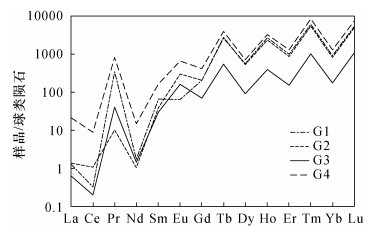
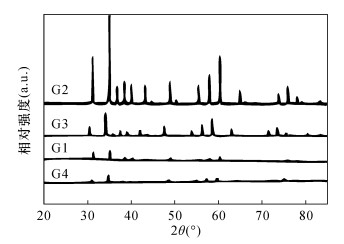
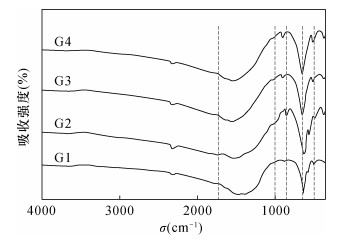
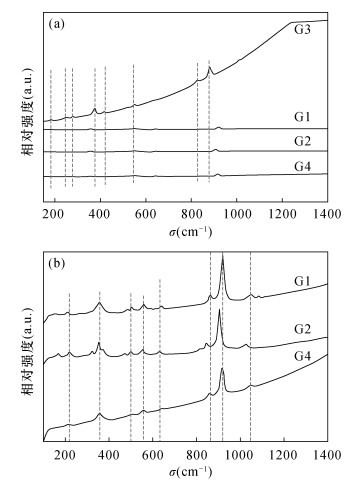
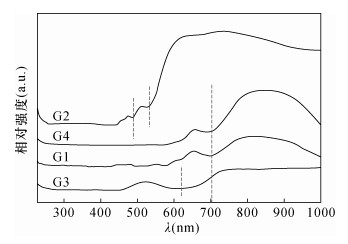
 京公网安备 11010202008159号
京公网安备 11010202008159号